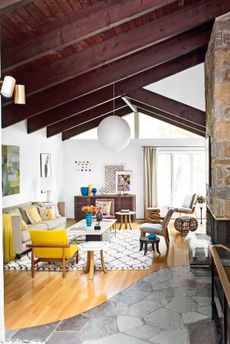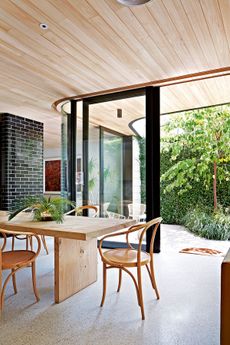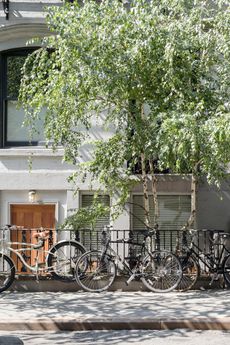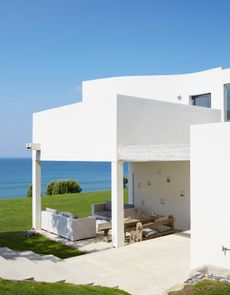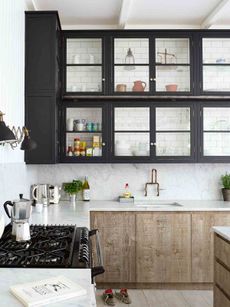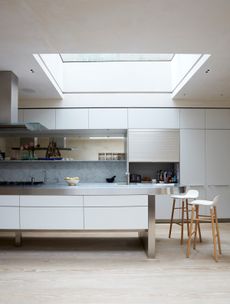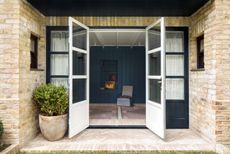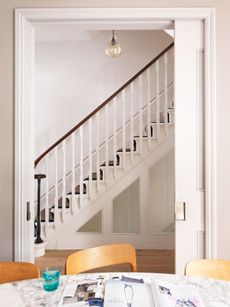Before & After: see how stables, a pig sty and animal barn became a stunning country retreat
A derelict plot of farmland dating all the way back to Roman times, and clearly defined in the Domesday Book of 1086, has been restored, preserved and given a new lease of life. Former barns, stables, pigsties and houses now serve a new purpose; as hotel bedrooms, a restaurant, bar and spa...

Nestled in the rolling hills of the Cotswolds' picturesque countryside is Thyme. Bordering a gorgeous village called Southrop, Thyme describes itself as 'a village within a village', as it's a cluster of barns and cottages that include a bar, a restaurant, a shop, a spa, a private dining barn, a vegetable garden, herb garden, bedrooms and self catered cottages. There's even a church on-site, where Kate Moss got married.
But Thyme hasn't always looked as charming as it does now. The owners – the Hibbert family – bought the plot in 2003 when the buildings were just derelict stables and animal barns, and over the years they have restored and converted each building, and even added on to the plot by acquiring neighbouring properties when they became available.
These barns and cottages date all the way back to Roman times, but they are first clearly defined in the Domesday Book of 1086. The Hibberts have spent the last fifteen years gradually restoring the historic manorial barns, houses and cottages, giving them new life and purpose.
OX BARN - BEFORE
There are two big barns at the heart of Thyme, one of which is the Ox barn.

Built in the 1800s, the Ox Barn was a state of the art construction for its time; the roof was constructed out of 65-foot-long beams, each made from an individual Douglas fir, brought over from Canada in 1820, a tortuous journey in long wooden ships. Built to house the farm’s oxen, it served that purpose for well over a century.
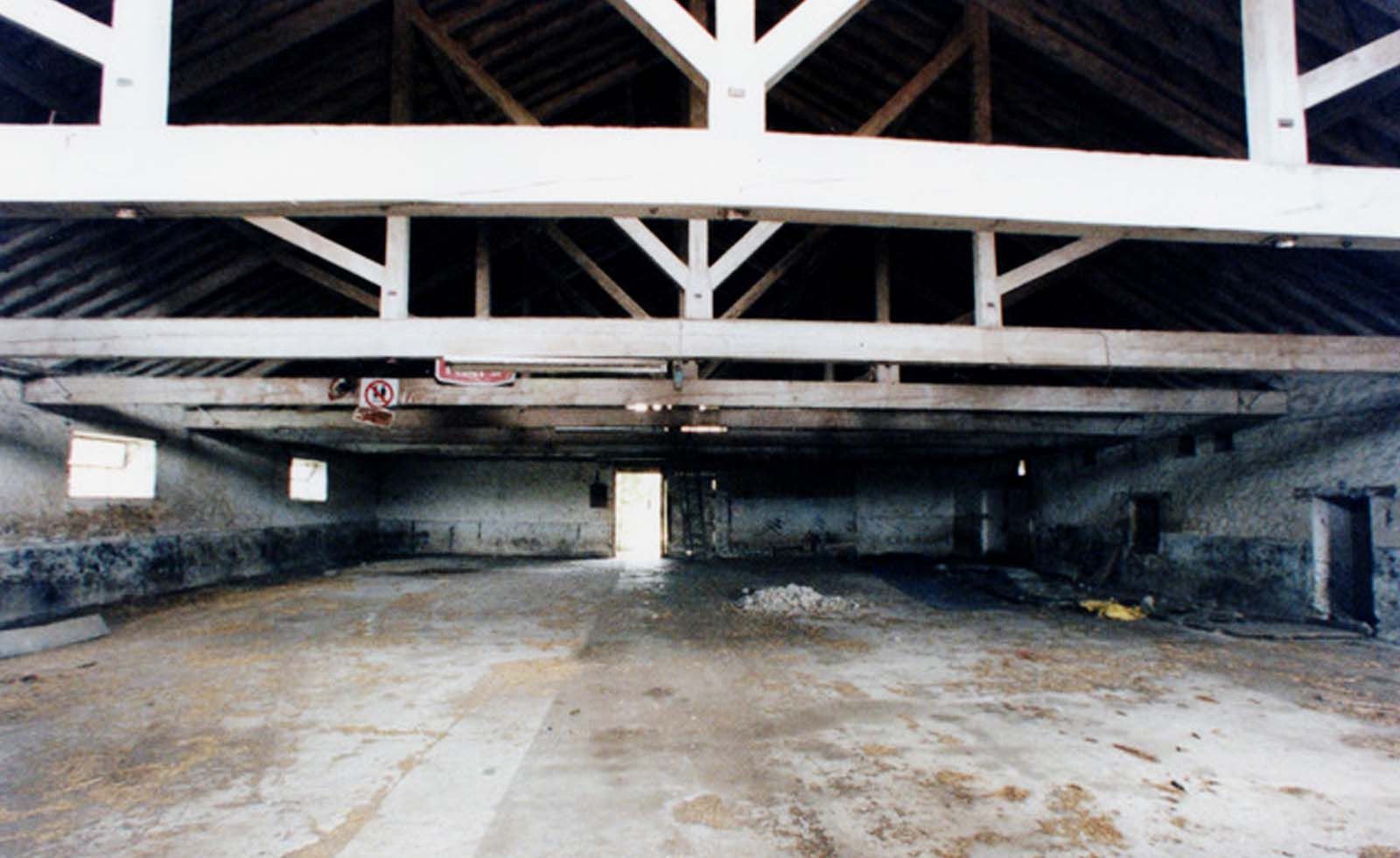
The Ox Barn was then fitted with stabling for event horses, until very recently.
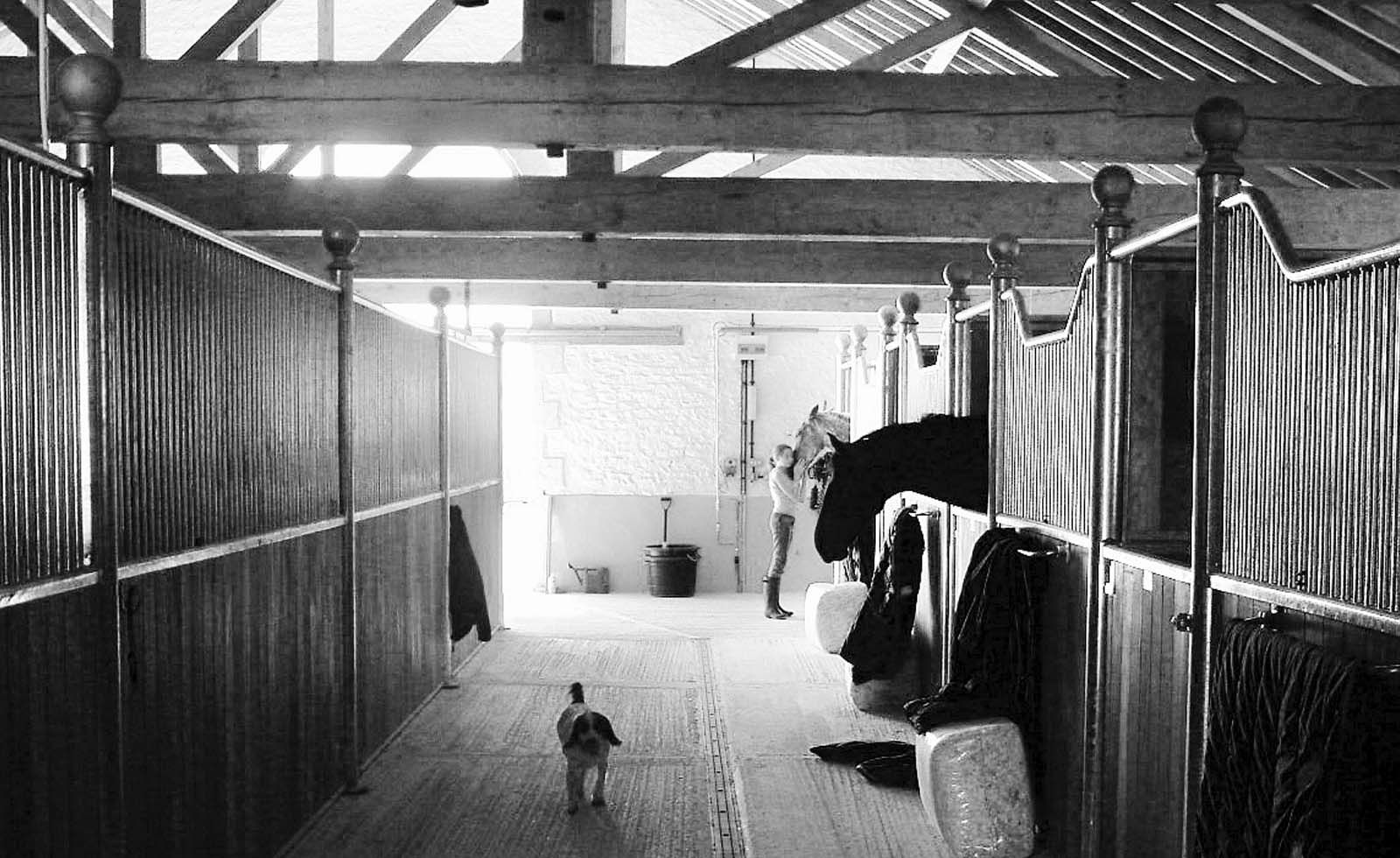
OX BARN – AFTER
Now a restaurant for staying guests as well as locals, the Ox Barn restaurant is impressive, grand and beautifully finished.


The interiors have been left almost untouched from their original design, with the kitchen and restaurant sitting within the space to preserve the integrity of the renovation and to celebrate the agricultural heritage rather than hiding it.


The roof was also restored and preserved. The original boarded herringbone ceiling has been cleverly insulated above. This was achieved by raising the entire roof and parapet so that they remain undisturbed, with the insulation laid above so the change is invisible. It makes the historic building a highly technical one and ensures that the heat generated by the green technologies at Thyme is completely efficient.


Thyme's signature sheep stools are cast at the famous Pangolin Foundry (where Damian Hirst's works are also created), and then wrapped in the wool of Thyme's own sheep. They add the finishing touch to the restaurant and bar areas.

OX BARN ENTRANCE - BEFORE
The main entrance to the restaurant is on the other side, where a former hay barn (for the oxen) was bolted on.

OX BARN ENTRANCE - AFTER
The structure looks almost exactly as it did, except for the large double doors that now lead inside, and the manicured courtyard garden in front.


TITHE BARN – BEFORE
Directly next to the Ox Barn restaurant is Tithe Barn, which now makes up the core structure for Thyme, housing reception, the shop, the bar, and a large private dining space.

TITHE BARN – AFTER
The original square entrance seen above is now where the 'Baa' bar sits. The ground in front of it is now manicured, and leads through to rooms and cottages on site.

Inside Tithe barn, the original structure was completely preserved and restored, but freshened up with a lick of paint, carefully placed lighting, and elegant furniture.
BAR – BEFORE
The barn area that connected the Ox Barn with Tithe Barn was derelict and in disrepair.

BAR – AFTER
Now this area houses a cool bar, The Baa, a nod to the property's large flock of resident sheep.

COTTAGES – BEFORE
Opposite the Ox Barn and Tithe Barn are two guest cottages, also beautifully restored, now with their own kitchens and living rooms.

COTTAGES – AFTER
The cottages, called The Tallet and The Dairy, have retained their original charm with stone exterior, but look fresh and cared for.

View from the mezzanine in the Ox Barn:

THE LODGE - BEFORE
The lodge was a lovely country home, but it needed updating.

THE LODGE – AFTER
The Lodge now houses most of the guest bedrooms.

The landscaped grounds were done by Bunny Guinness, while the plot of a derelict greenhouse was re-built as the Spa. The original greenhouse had fallen down before the change of ownership, and all that was left was one freestanding central wall – listed of course! The new greenhouse building that sits in its place was constructed and built in a traditional style around that wall, leaving the building's history in tact.


The walls surrounding The Lodge are historic and listed, so needed to be kept as they were. They are now incorporated as part of the spa.


The natural black slate swimming pool is filled with Thyme's own spring water and is filtered through an innovative ceramic biodynamic filter meaning it needs no chemicals or salt at all.
FARMHOUSE –BEFORE
When another neighbouring property came up for sale – the Farmhouse – the Hibberts snapped it up and incorporated it as part of Thyme.

It underwent an extensive renovation, and now houses gorgeous guest bedrooms.

FARMHOUSE – AFTER

OLD WALLS – BEFORE
Now every last barn, cottage and structure on the land has been renovated, and given purpose, whether as a guest cottage or communal building.

OLD WALLS – AFTER

Be The First To Know
The Livingetc newsletter is your shortcut to the now and the next in home design. Subscribe today to receive a stunning free 200-page book of the best homes from around the world.
Lotte is the Digital Editor for Livingetc, and has been with the website since its launch. She has a background in online journalism and writing for SEO, with previous editor roles at Good Living, Good Housekeeping, Country & Townhouse, and BBC Good Food among others, as well as her own successful interiors blog. When she's not busy writing or tracking analytics, she's doing up houses, two of which have features in interior design magazines. She's just finished doing up her house in Wimbledon, and is eyeing up Bath for her next project.
-
 How to Thaw a Frozen Pipe — Learn Everything You Need to Know in 5 Minutes With This Guide
How to Thaw a Frozen Pipe — Learn Everything You Need to Know in 5 Minutes With This GuideWinter storm caught you off guard? We asked an expert — just how do you thaw a frozen pipe?
By Hugh Metcalf Published
-
 The 12 Very Best Silk Bedding Pieces — As Our Style Editor Says: 'It's What Dreams Are Made Of!'
The 12 Very Best Silk Bedding Pieces — As Our Style Editor Says: 'It's What Dreams Are Made Of!'Slumber in lustrous luxury with the very best silk bedding sheets, duvets, pillowcases, and more — your sleep score will thank us later
By Julia Demer Published
-
 Tour a mid-century house in Philadelphia with a modern take on Mad Men style
Tour a mid-century house in Philadelphia with a modern take on Mad Men styleThis mid-century house in Philadelphia is a modern take on mid-century design and the perfect backdrop for this enviable collection of art and objects
By Livingetc Last updated
-
 This modern Edwardian house in Melbourne is small but mighty
This modern Edwardian house in Melbourne is small but mightyIt may be small, but thanks to its ingenious design, this Edwardian house in Melbourne makes family living a breeze
By Livingetc Last updated
-
 Old meets new in this apartment in New York's East Village - a former community centre built in 1860
Old meets new in this apartment in New York's East Village - a former community centre built in 1860The owner of this loft-style apartment in New York's East Village mixes ancient and modern with timeworn pieces, design classics and his own abstract art...
By Livingetc Last updated
-
 Explore this super-contemporary coastal house in Cornwall
Explore this super-contemporary coastal house in CornwallThis coastal house in Cornwall is all about drinking in the uninterrupted views of nature at its most raw, most pure…
By Livingetc Last updated
-
 Explore this spacious detached 1900s house in southeast London with stylish modern interiors
Explore this spacious detached 1900s house in southeast London with stylish modern interiorsEdgy textures, luxe materials and a mix of vintage and bargain buys transformed a blank detached 1900s house in southeast London into a home full of personality.
By Livingetc Last updated
-
 This large house in west London is minimal yet playful
This large house in west London is minimal yet playfulA firefighter’s pole in the kitchen and a slide down the stairs? This house in west London proves minimalism can also be fun.
By Livingetc Last updated
-
 Inside A Clever Garden Room That Doubles As A Chic Guest House
Inside A Clever Garden Room That Doubles As A Chic Guest HouseThis striking garden room design incorporates a sleeping area, kitchenette, loo and shower, as well as plenty of storage space, making it ideal as both a self-contained guest house or a restful retreat to escape to.
By Lotte Brouwer Published
-
 This light and bright Victorian terrace in west London is relaxed yet stylish
This light and bright Victorian terrace in west London is relaxed yet stylishThis chic Victorian terrace in west London is full of clever ideas that allow it to evolve.
By Livingetc Last updated


